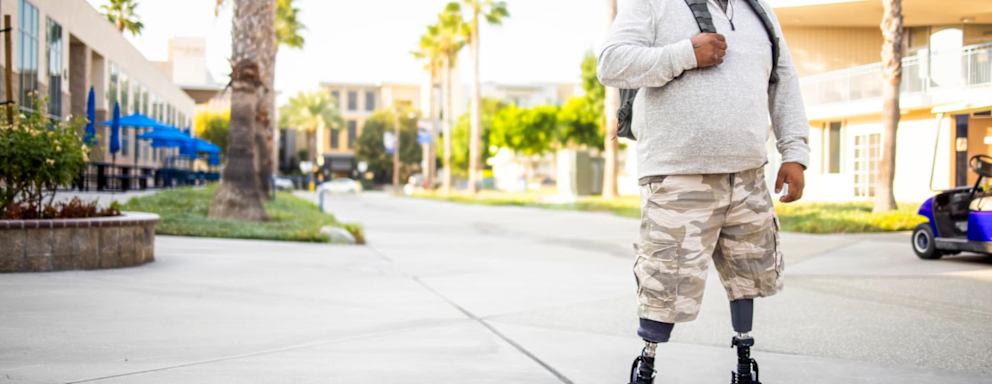New Data Shine Light on Veterans Pursuing Higher Ed
 Credit: showqdf
Credit: showqdf- More than 1 million Americans currently receive GI Bill® benefits for higher education programs.
- In 2020, 80% of student veterans pursuing higher ed degrees or credentials were full-time students.
- Student veterans are often older, married, and work full- or part-time jobs while in school.
Millions of Americans delayed their education to serve their country. This Veteran’s Day, we’re taking a closer look at those who have completed their service and are now pursuing degrees and credentials in higher education.
Student veterans have served in all branches of the United States Armed Forces. As they pursue degrees and credentials in both traditional postsecondary institutions and non-traditional training programs, they often experience a different set of challenges than non-veteran students.
Though the number of veteran students enrolled each year seems to be growing, the number of veterans with degrees has fallen, according to data from the U.S. Census Bureau. Debt, disabilities, and outside responsibilities continue to dissuade many veterans from pursuing and achieving their educational goals.
How Many Veterans Are Students?
Of the approximately 19 million veterans across the U.S., at least 1 million were receiving GI Bill benefits for higher education programs as of 2020. These students include currently serving members of the military as well as individuals who have been honorably discharged from the armed forces.
Because of this mix, it’s difficult to know exactly how many of these students are actually veterans. However, according to 2019 census data at least 5 million individuals with veteran status in the U.S. had a bachelor’s degree or higher. This number has actually decreased from the year prior and since 2010, the number of veterans with bachelor’s degrees or higher has dropped by 9 percent.
There is no currently-existing official database that keeps track of all veteran students. But, Student Veterans of America (SVA) does its best to fill the gap with their annual census survey. In 2020, 1,477 veterans participated in the SVA survey, a 72% increase in participation from the year prior. The survey gives insight into the demographics of student veterans across the nation.
Student Veteran Enrollment by the Numbers
The SVA’s 2020 Census Survey found that the majority of veteran students attend public, four-year institutions as full-time students.
Veteran Students’ Enrollment Status – Currently Enrolled Students
| Full-time | 80% |
|---|---|
| Half-time | 9% |
| Less than half time | 5% |
| Three-quarters time | 6% |
Veteran Students’ College Type
| 4-year public school | 59% |
|---|---|
| 2-year public school | 18% |
| 4-year private (not-for-profit) school | 16% |
| Private for-profit or proprietary school | 4% |
| Other | 3% |
Nearly two-thirds of these students are or will become first-generation college graduates.
Most Veteran Students Are Older, Married and Employed
While the majority of student veterans are full-time students, they often additionally have to balance school with working full- or part-time jobs at higher rates than traditional students. According to the SVA, in 2020 74% of currently enrolled veteran students were working full- or part-time. On average, these students worked 35 hours a week.
Veteran students also tend to be older when they begin their education. Generally, about 41% of students enrolled at 4-year and 2-year institutions are 18-24 years old. However, less than 15% of veteran students have fallen into that category over the last five years; in 2020, 80% of student veterans were 24-35 years old, according to the SVA report.
Likewise, a high percentage of student veterans are married or have children. Fifty-two percent reported in 2020 that they were married, 46% had children, and 19% were single parents.
Lastly, student veterans tend to have higher rates of disabilities. In 2020, nearly two-thirds of all student veterans stated that they have at least one Veteran Affairs (VA) disability rating. This means that they had a service-connected condition that has been rated by the VA and made them eligible for monthly compensation. Among these students, approximately 75% reported that their disability impacts their educational experience.
More Women Veterans Are Pursuing Higher Education
Women account for just 31% of student veterans, according to the SVA. However, that population continues to grow as the number of women veterans increases with it. They are currently the fastest-growing demographic group of veterans in the U.S.
Since 2016, the number of women student veterans has increased by approximately four percentage points. Women student veterans also make up more than half of the SVA’s campus chapter leaders across the country.
GI Bill® is a registered trademark of the U.S. Department of Veterans Affairs (VA). More information about education benefits offered by VA is available at the official U.S. government Web site at https://www.benefits.va.gov/gibill/.
Feature Image: adamkaz / E+ / Getty Images